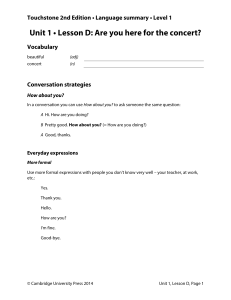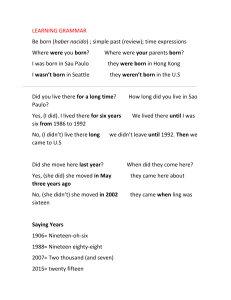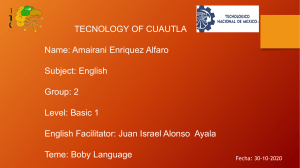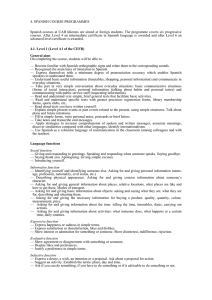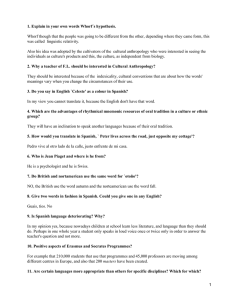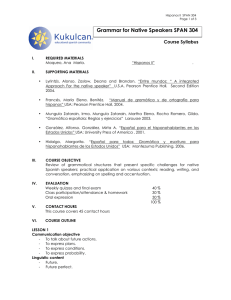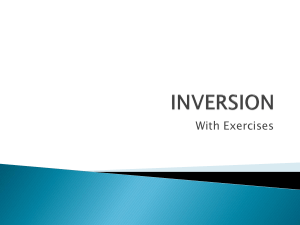Spanish Multword Expressions: typology and structural analysis
Anuncio
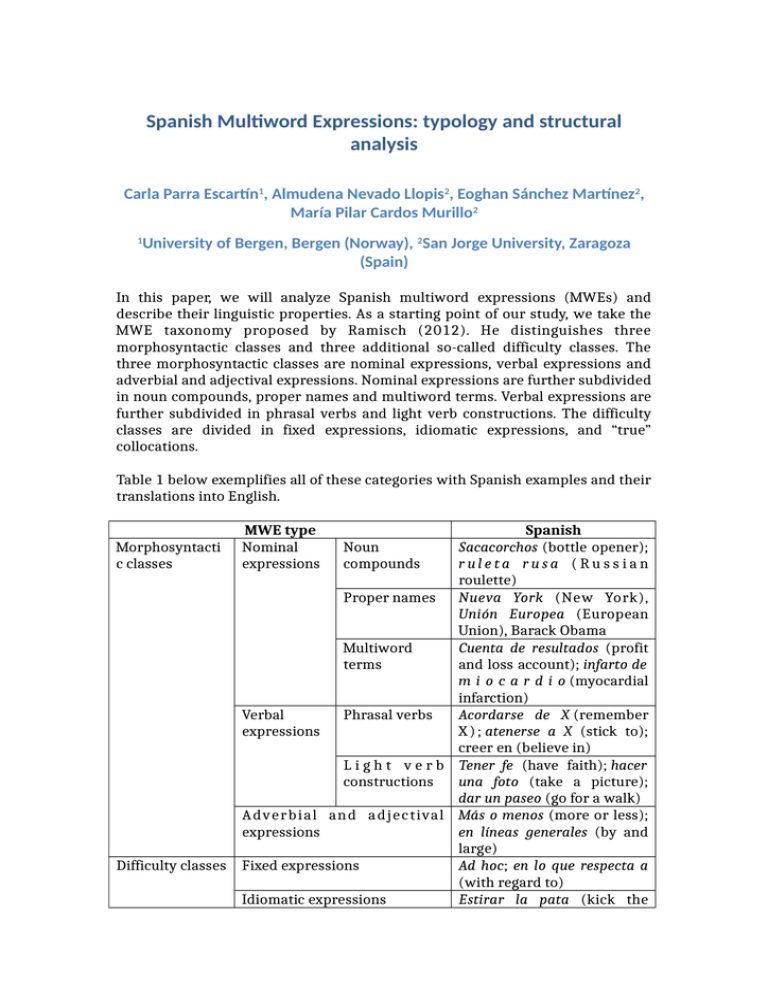
Spanish Multword Expressions: typology and structural analysis Carla Parra Escartn1, Almudena Nevado Llopis2, Eoghan Sánchez Martnez2, María Pilar Cardos Murillo2 1 University of Bergen, Bergen (Norway), 2San Jorge University, Zaragoza (Spain) In this paper, we will analyze Spanish multiword expressions (MWEs) and describe their linguistic properties. As a starting point of our study, we take the MWE taxonomy proposed by Ramisch (2012). He distinguishes three morphosyntactic classes and three additional so-called difficulty classes. The three morphosyntactic classes are nominal expressions, verbal expressions and adverbial and adjectival expressions. Nominal expressions are further subdivided in noun compounds, proper names and multiword terms. Verbal expressions are further subdivided in phrasal verbs and light verb constructions. The difficulty classes are divided in fixed expressions, idiomatic expressions, and “true” collocations. Table 1 below exemplifies all of these categories with Spanish examples and their translations into English. Morphosyntacti c classes Difficulty classes MWE type Nominal expressions Spanish Sacacorchos (bottle opener); ruleta rusa (Russian roulette) Proper names Nueva York (New York), Unión Europea (European Union), Barack Obama Multiword Cuenta de resultados (profit terms and loss account); infarto de m i o c a r d i o (myocardial infarction) Verbal Phrasal verbs Acordarse de X (remember expressions X ) ; atenerse a X (stick to); creer en (believe in) L i g h t v e r b Tener fe (have faith); hacer constructions una foto (take a picture); dar un paseo (go for a walk) Adverbial and adjectival Más o menos (more or less); expressions en líneas generales (by and large) Fixed expressions Ad hoc; en lo que respecta a (with regard to) Idiomatic expressions Estirar la pata (kick the Noun compounds bucket); poner la antena (listen without being invited to); ponerse las pilas (to get one’s act together); cargar las pilas (to recharge one’s batteries) “True” collocations Escribir una carta (write a letter); firmar un acuerdo (sign an agreement) Table 1: Typology of MWEs and examples in Spanish The classes distinguished in the typology will be further analyzed and classified by their degree of difficulty for Natural Language Processing (NLP) purposes. To this aim, we will study whether the strategies proposed in the seminal papers by Sag et al. (2002) and Baldwin and Kim (2010) hold for Spanish. The starting point of our study will be a list of Spanish MWEs classified using the typology proposed by Ramisch (2012) and further analyzed and classified as fixed, semi-fixed and fixed expressions, as proposed by Baldwin and Kim (2010). The linguistic analysis of the data will allow us to describe the specific linguistic features of Spanish MWEs and discuss the challenging cases. As Spanish is a rich morphological language, we foresee the need for a deeper linguistic analysis than in other languages such as English. A similar observation was made in Savary (2008) and Graliński et al. (2010). These authors already studied the complexity of encoding MWEs in morphologically rich languages such as Polish and French. Testing the formalisms they propose is beyond the scope of this article. However, we will take into consideration their findings, as Spanish MWEs may require a similar treatment to that of French. We expect that our analysis can also give light to the MWE treatment in other Romance languages such as French and Italian, which also have a rich morphology. Bibliography Baldwin, Timothy and Su Nam Kim (2010) Multiword Expressions, in Nitin Indurkhya and Fred J. Damerau (eds.) Handbook of Natural Language Processing, Second Edition, CRC Press, Boca Raton, USA, pp. 267-292. Graliński, Filip and Savary, Agata and Czerepowicka, Monika and Makowiecki, Filip. 2010. Computational Lexicography of Multi-Word Units: How Efficient Can It Be? In: Proceedings of the Multiword Expressions: From Theory to Applications (MWE 2010), pages 2–10, Beijing, August 2010. Ramisch, Carlos. 2012. A generic and open framework for multiword expressions treatment: from acquisition to applications. University of Grenoble (France) and Federal University of Rio Grande do Sul (Brazil) Sag, Ivan A. and Baldwin, Timothy and Bond, Francis and Copestake, Ann and Flickinger, Dan. 2002. Multiword Expressions: A Pain in the Neck for NLP. In Proc. of the 3rd International Conference on Intelligent Text Processing and Computational Linguistics (CICLing-2002). Savary, Agata. 2008. Computational Inflection of Multi-Word Units. A contrastive study of lexical approaches. Linguistic Issues in Language Technology, 1(2):1–53.
